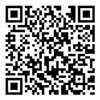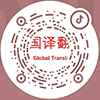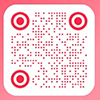Specific Solutions
How Is Clinical Medical Paper Translation Priced?
Understanding the Cost Behind High-Quality Scientific Translation
In today’s global research environment, more and more Chinese doctors, clinical researchers, and medical institutions are submitting their work to international journals such as The Lancet, JAMA, BMJ, or SCI-indexed publications. At this stage, high-quality translation of clinical medical papers becomes essential—not just for language accuracy, but for clarity, professionalism, and international acceptance.
A frequently asked question is:
“How much does it cost to translate a clinical medical paper?”
There is no single answer to this question. Pricing depends on multiple professional and technical factors. Understanding what drives the cost will help authors make informed decisions and avoid choosing services based on price alone.
1. What Affects the Cost of Clinical Medical Translation?
1. Level of Specialization and Terminology
Medical papers involve complex terminology across disciplines such as pathology, pharmacology, epidemiology, and biostatistics. Translators must not only have strong language skills, but also a medical or biomedical background, enabling them to accurately interpret and render technical concepts. This level of expertise directly influences cost.
2. Quality of the Original Manuscript
If the source text is logically structured, well-written, and clearly expressed in Chinese, the translation process will be smoother. However, if the original contains ambiguous or poorly organized language, translators often need to restructure or clarify content, increasing the time and effort required.
3. Intended Use and Language Standards
If the translation is for SCI journal submission, it must meet international academic writing standards. This often requires not just translation, but native-language editing and adaptation to target journal requirements. Such services are handled by expert editors, medical translators, and sometimes journal-specific reviewers—making the process more rigorous than standard translation.
4. Scope of Service: Translation, Editing, Formatting
Many providers offer not only translation but full publication preparation services, including:
Terminology consistency
Native English editing
Formatting for AMA, APA, or Vancouver styles
Reference style alignment
Each of these adds value—and work—to the process, and may influence overall cost.
5. Word Count and Delivery Timeline
Most services price by word or character count, but rush jobs or urgent deadlines will affect pricing. Additionally, whether the paper includes charts, figure captions, footnotes, or extensive references will also factor into workload and quotation.
2. Choosing the Right Provider: Quality Over Cost
In the field of medical research, low-cost translation often comes with significant risk:
❌ Mistranslated terminology
❌ Inaccurate clinical expressions
❌ Unnatural academic tone
These can lead to paper rejection, misunderstanding by peer reviewers, or damage to the author’s professional credibility.
When selecting a translation partner, look for:
Translators with a medical or life science background
Native-level language editing included (or available)
Experience with SCI or PubMed-indexed journal submissions
The ability to handle reviewer comments and support post-translation revisions
Secure, confidential handling of academic data and unpublished content
3. Final Thoughts: Cost Reflects Value, Not Just Volume
When asking “How much does clinical medical paper translation cost?” —
the better question might be:
“What level of quality and support will this service provide for my research?”
For serious researchers, a well-translated, publication-ready manuscript is not just a matter of convenience—
it’s a critical step in sharing valuable knowledge with the global medical community.


















